Model Kids: Decades Ago, GM Put a Call Out For Young Car Designers. Thousands Answered
This article first appeared in Hagerty Drivers Club magazine. Click here to subscribe and join the club.
Once upon a time, industrialists and educators came together to form a national organization for the advancement of artisanal craft skills among young boys. It was heavily promoted in high schools, youth groups, auto shows, and car dealerships across the country. It annually paid out thousands—and then millions—of dollars in college scholarships, and it grew to become second only to the Boy Scouts of America in membership. Its board of directors included the most powerful and influential industry leaders of the day, and invitees to its annual awards banquet in Detroit were flown in first class and chauffeured around in limousines.
And all a kid had to do to take a shot at securing his educational future was to build a miniature model. Not a plastic job out of a box, as most of us have attempted at one time or another, but an exacting replica of an ancient carriage or a wholly unique creation of their own design, conceived, sketched, measured, clay-modeled, and then constructed entirely from scratch. No help from Dad allowed.
From 1930 until 1968, the Fisher Body Craftsman’s Guild, so named for the coachwork firm that became a General Motors division in 1926, ran an annual nationwide talent search disguised as a model-building competition. The goal was to identify from among America’s teeming ranks of teenage youth the truly exceptional, the kids who had the artistic eye, the crafting skills, and the stick-to-itiveness to complete a phenomenally rigorous craft project.
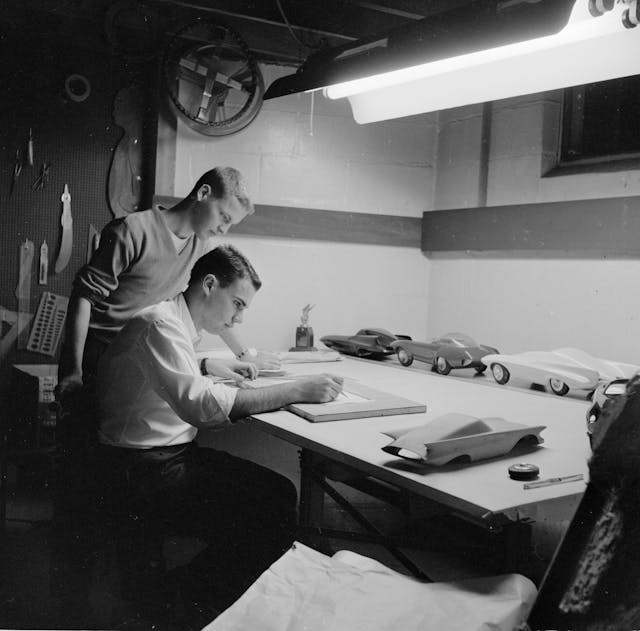
Regional competitions fed winners to a national finale in Detroit, where a four-day pageant culminated in the awarding of scholarships that topped out at $5000 for the overall winners, a mighty sum in the era. The event also exposed the top echelon of young model builders to the wonders of the American auto industry at a time when it was at its imperial zenith. Naturally—and in accordance with the plan—many of those kids returned as college graduates to work in that industry.
It’s hard to imagine in the modern age when most people spend their day tapping keyboards or swiping screens that at one time, there were enough boys aged 11 to 19 in America willing to create thousands of model cars every year entirely from scratch. “When I look at my model today, I think, ‘How the hell did I do this?!’” said 1961 junior national winner Tony Simone, now of Bartlett, New Hampshire. “I have to give the Guild credit for giving us skills to use in life. Even today, that attention to detail is still with me.”
“The people who won had mastered discipline before the age of 20,” said Robert Davids, who was a 19-year-old Venice, California, pinstriper and surfboard shaper when he won the 1963 senior national award and a $5000 scholarship by carving a dramatic three-seat bubble-top coupe out of yellow poplar wood. For a year, Davids said, there was no girls, no dates, not even haircuts, only work during the day and then the model at night, typically until 3 a.m. “Every single disciplined person who entered was going to do OK in life, but the winners excelled at an early age.”

Then, as now, there was free money around if you could throw a ball or converse in mathematical theorems. Sports and academic scholarships have long been familiar avenues for teenagers from disadvantaged backgrounds to access the realm of higher education. The Fisher Body Craftsman’s Guild stood apart by being a scholarship program based mainly on manual skills of the type one learned in the shop classes that were once commonplace in high schools.
“Here was a take-home, industrial arts aptitude test that identified teenagers with innate artistic ability, creativity, imagination, spatial relationship acuity, manual dexterity, aesthetic eye, good taste, a propensity for perfection, and high intellect,” wrote John Jacobus, a Guild member in the 1960s whose later historical research for the Smithsonian Institution resulted in a book on the subject, The Fisher Body Craftsman’s Guild: An Illustrated History (upon which our story is heavily dependent). The skills that the model competition prioritized, he added, “were all qualities sought after by the auto industry.”
The inspiration of William A. Fisher, one of the seven Fisher brothers who had transitioned the family carriage business into a hugely successful vehicle-body supplier, the Fisher Body Craftsman’s Guild launched on August 25, 1930, with radio and print ads and large posters plastered to the windows of Chevrolet, Buick, Viking, Oldsmobile, Cadillac-LaSalle, and Oakland-Pontiac dealerships. The posters as well as promotional booklets lured boys with the promise of a share in the unimaginable sum of $75,000 (about $1.3 million today). Nearly 150,000 signed up the first year, just over 400,000 the second, records Jacobus.
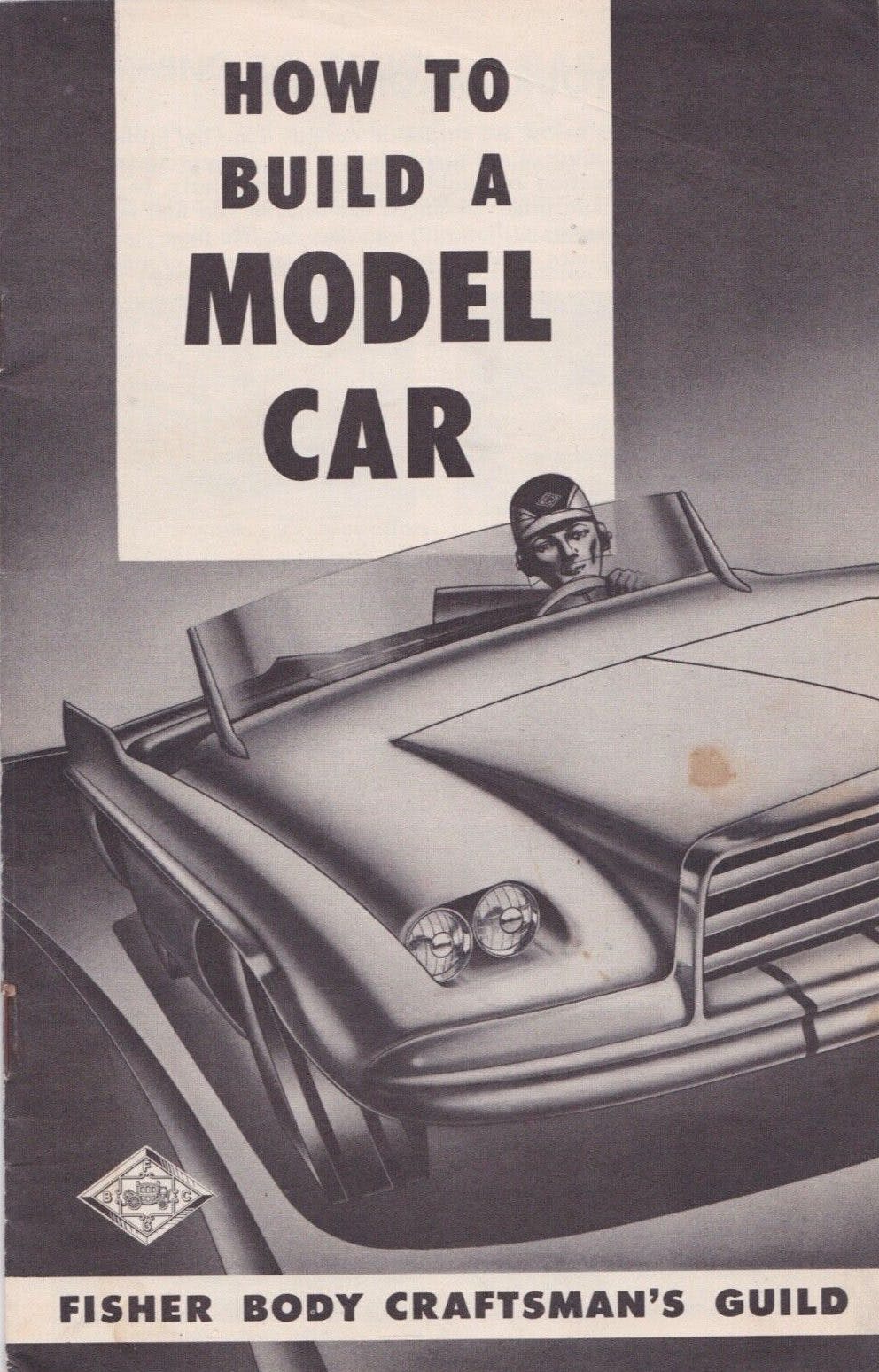
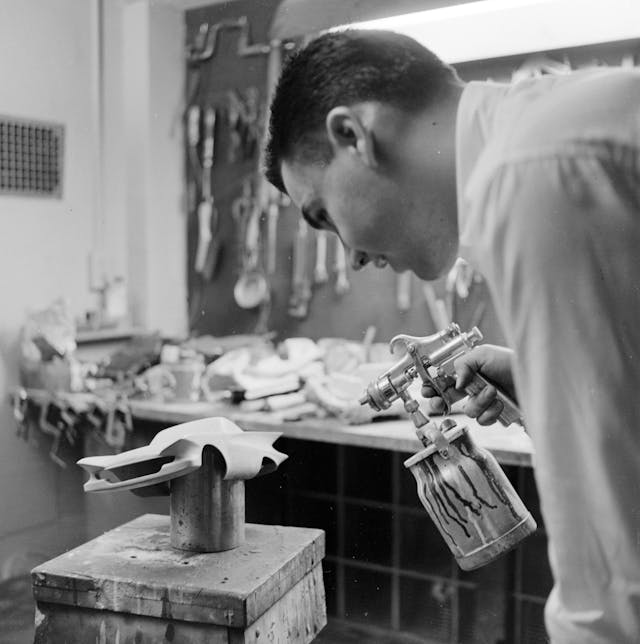
The need was great. The Great Depression was already beginning to grip the country following the October 1929 stock market crash. The ranks of the unemployed were swelling, and fewer and fewer families had the means to offer anything more to their children beyond a life of hardscrabble toil from the earliest age. Amid the bread lines and the whispers of worker revolt and communist revolution, big ideas floated around about the very nature of work and the role of individuals in societies that were rapidly urbanizing and industrializing. “It is the sincere desire of the builders of Bodies by Fisher,” extolled a 1930 ad for the Guild in The Saturday Evening Post, “that tomorrow shall see this country peopled by men to whom honor can be given for their ability to design well and build soundly whatever their generation may require.”
The competition’s challenge was as daunting as the prizes were lavish. Early competitions required entrants to produce a detailed wood-and-metal replica of the ornate Napoleonic carriage that appeared in the “Body by Fisher” logo (ubiquitous on GM cars produced from the 1920s through the 1980s). Builders had to construct an 18-inch-long, 10-inch-high scale model complete with metal filigree, opening doors, and upholstery-lined interior using only blueprints and a 25-page instruction booklet that the Guild provided. It’s believed that two master models were produced over six months by craftsmen at Fisher’s Pennsylvania-based Fleetwood Metal Body division and that their time estimate to make a copy from the plans was 1600 hours.
Which helps explain why out of the millions of boys who signed up to the Guild in those early years, receiving their free pamphlet, membership card, and diamond-shaped Fisher Body Craftsman’s Guild pin, only a few thousand coach models were ever actually produced. Enterprising model companies developed kits to speed the builds, but even those were crude by today’s standards—just a few blocks of unshaped wood and some metal—and they still required enormous skill and patience to turn into viable entries. By the time the coach idea was dispensed with entirely in 1948 (the Guild paused its activities during World War II), it’s thought that only around 7000 carriage models had been built.
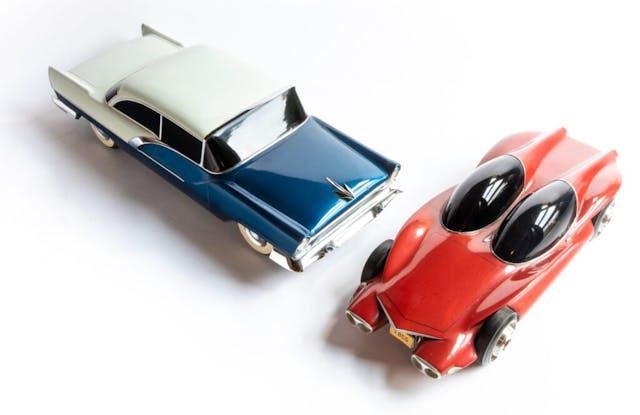
As it happened, the contest that replaced it wasn’t much easier. It asked entrants to build a 1/12th-scale concept-car model entirely of their own design. Believed to have been heavily pushed by GM’s first and renowned styling chief, Harley J. Earl, the concept category debuted in 1937 and the Guild fully pivoted to it in 1948. According to the late Charles E. “Chuck” Jordan, who won the 1947 competition and went on to become vice president of design at General Motors, the coach project was handicapped by the fact that “no individualized characteristics or personal creativity were sought—the coach was in the strictest sense a craft project, with no variation sought or accepted, saving excellence in detail or finish.”
That was fine in 1930 when, as the author Jacobus notes, car bodies still employed lots of timber as well as hand-finishing. Originally, the Guild was created to ferret out promising pattern- and toolmakers. But as the industry evolved, stamped-steel mass production took over and styling rose in importance. The talent need shifted away from an increasingly low-skill and automated production floor and toward the newly created styling studios, where designers and clay modelers were tasked with envisioning tomorrow’s vehicles. It’s no mere coincidence that the Fisher Body Craftsman’s Guild turned its attention to futuristic concepts almost at the same time Earl unveiled the industry’s first concept car, the 1938 Buick Y-Job.
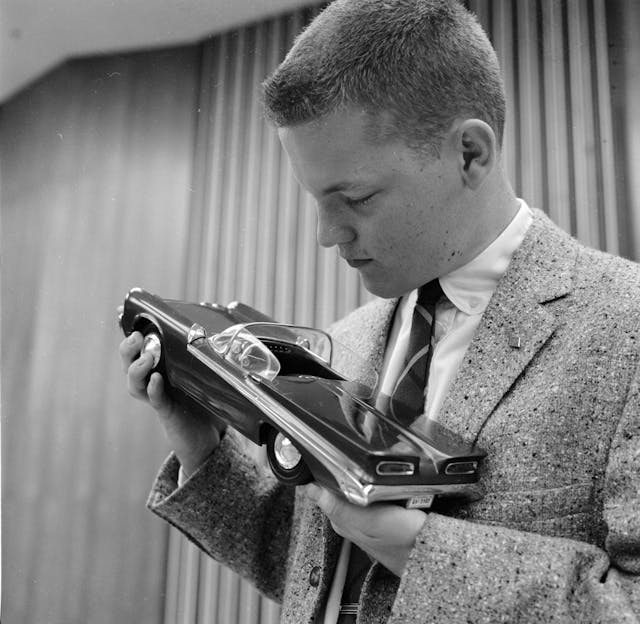
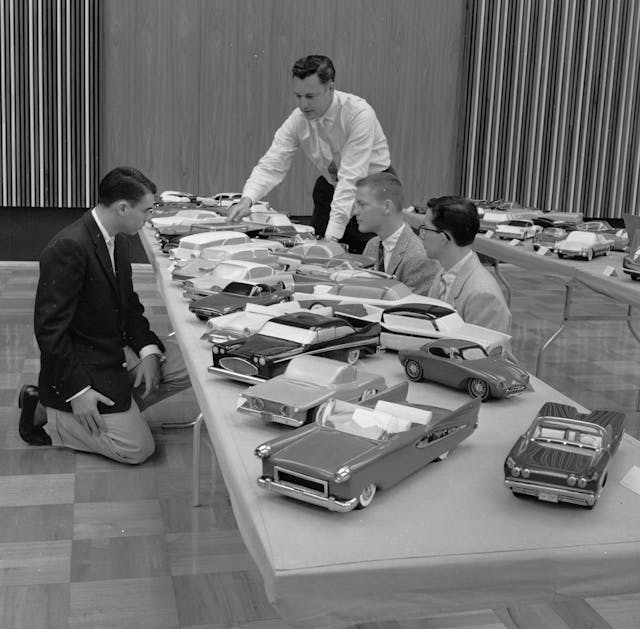
In an age before the time sucks of television and computers, when more families made their living doing manual labor in factories or on farms and college seemed like a faraway dream, plenty of kids were willing to gamble their free time and their sweat on a long shot like the Fisher Body Craftsman’s Guild. And it was indeed a long shot. Though the posters advertised the riches available to winners, fewer than 400 scholarships were awarded over the 34 years the Guild was active (though smaller prizes were distributed at the regional level). During that time, 10 million American boys signed up—girls were allowed only in similar programs run by GM’s European and Australian subsidiaries—from which about 33,000 models were produced.
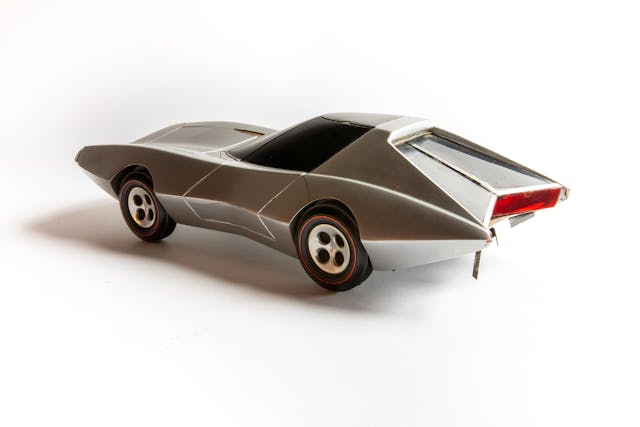
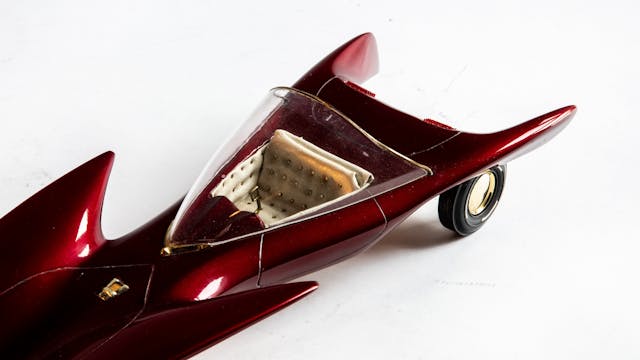
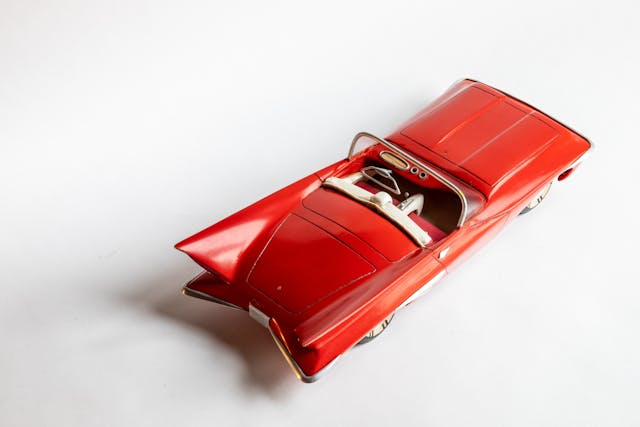
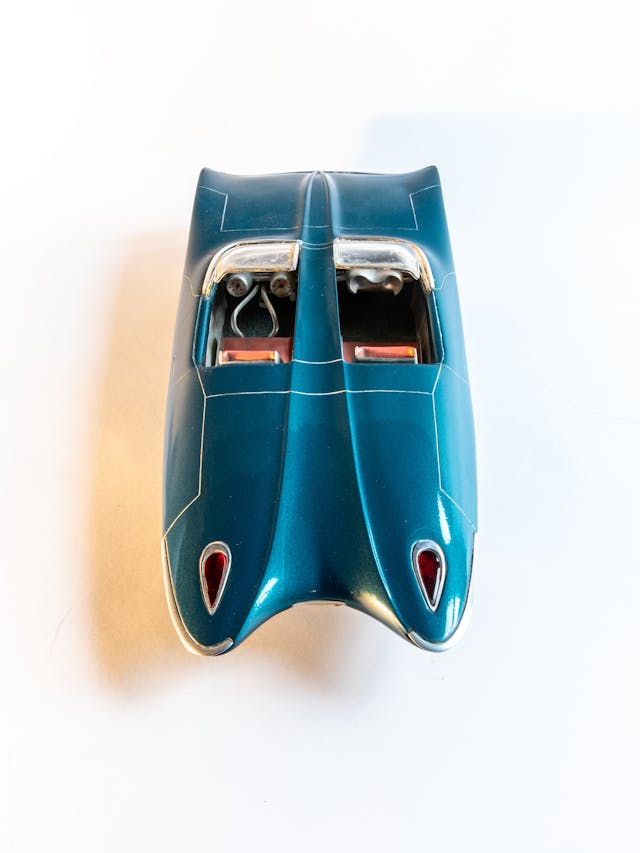
Despite the odds, it was worth it to kids who saw little opportunity elsewhere. “My father was a machinist and a toolmaker during World War II,” said Tony Simone, the ’61 winner. “One night, he came home and told my brothers and me to come to the dinner table, and he said, ‘I can put a roof over your head and food on the table, but I can’t afford to send you to college.’ [The Guild] was a lifeline, and I’m just one story out of thousands and thousands.”
Davids, the ’63 winner, was born the son of a soybean sharecropper in Franklin, Missouri. “My mother told me, ‘You don’t have a chance. People like us don’t win things like that.’”
Keenly aware of the challenges facing its members, the Guild produced a booklet called “How to Build a Model Car” with illustrated step-by-step instructions, starting with the basics of vehicle design. Cartoons showed readers how a low, curved roof and a long wheel-base was more aesthetically pleasing than a short wheelbase under a tall, boxy roof. It encouraged doodling of headlights and taillights, of fins and windshields and different types of exterior decoration such as hood ornaments and faux jet exhausts. It gave instructions on how to make a clay model, a wood model, or a plaster model from your drawings, how to get the wheel-to-fender clearances right, how to curve a piece of translucent plastic to make a windshield, and the best ways to apply paint. It included plan drawings of coupe and sedan/wagon cockpits, giving builders an accurate size template to sketch around.
In addition, a bimonthly newsletter, called the Guildsman, was full of tips as well as profiles of working designers and interviews with past winners. Typical headlines: “Four Hundred Pleasant Hours of Work: How Ken Kaiser built a $2000 Winner.” And, “Use Proper Plaster—Avoid Breakage; Hydrocal and Dental Plaster Good.”
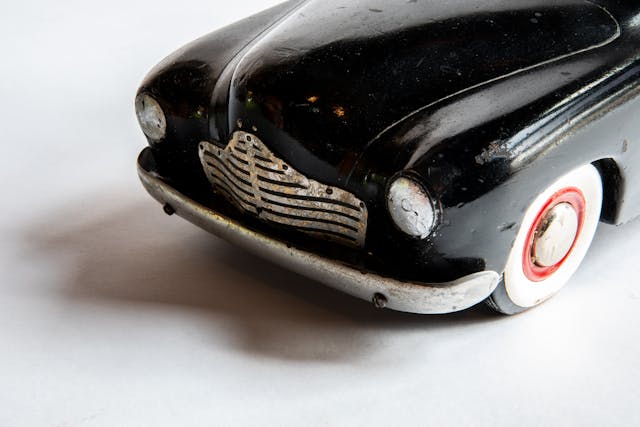
“Headlights can be made from the ends of small, inexpensive screwdrivers,” read one how-to column from 1959. “The end of the handle is sawed off, filed, and mounted. The parabolic shape of the end looks much like an actual headlight.” To make things easier, aspiring builders could send to the Guild for a free set of prefinished wheels (sans hubcaps, of course, as those were up to the builder). The newsletter reminded builders not to forget rule No. 7 of the 13 compulsory rules, which required the models to have provisions for license plates front and rear.
David Courtney, now of Lomita, California, remembers as an aspiring car designer in small-town Illinois reading in the Guildsman a tip that taillights could be cut from the ends of toothbrushes there were made out of transparent red plastic. “I had those red toothbrushes for years,” he said. But like a lot of aspiring entrants, Courtney never completed the two models he began, one of which, an attractive Camaro-like roadster crafted from wood, he still has. “I had a handsaw, a file, a drill, and a 4-inch vise. That was it. As a result, my designs were pretty limited, and how to go about making it, I had no idea.”
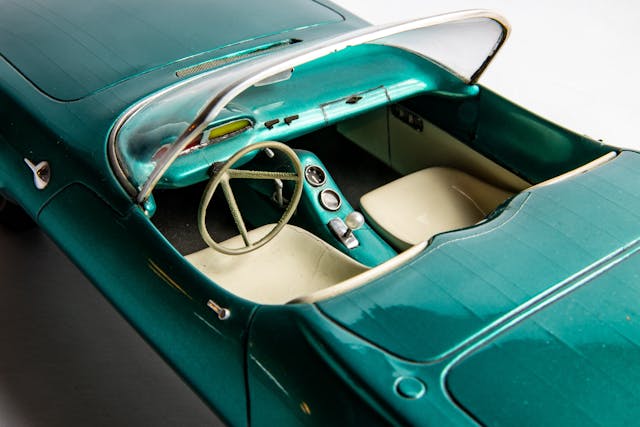
Davids, the ’63 winner, attributes at least part of his success to knowing some past winners personally, and to obtaining a mailing list of others so that he could write them. Thus, he learned before starting the high standards that were expected. “One of the things you heard was detail, detail, detail. And you had to be authentic; you can’t polish aluminum until it looks like chrome. It has to be chrome.”
Most kids didn’t have ready access to chrome shops or much else that was needed to build a winning model from scratch, so the Guild encouraged its teenage members to be resourceful. Davids knew he wanted to put a fully enclosed bubble-top roof formed from 1/16th-inch-thick plastic over a fully finished interior, a feat that had never successfully been attempted in the competition. Not only that, but in his design, the car’s rear had a dramatic duct-like channel molded into the roof that carried through the rear glass into the trunk, an absolute showstopper—if he could pull it off.
To make a roof from his hand-carved molds, Davids needed a vacuum former, but having no money, he hit the scrapyards and salvaged an electric motor from an old refrigerator and a surplus vacuum pump from a B-52 bomber, kluging a working machine together. “I made 20 to 24 attempts to make the roof, from which I got two, one that was perfect and one that was almost perfect. I put the perfect one on the shelf and used the almost perfect one to build the model around. When I was ready, I finished the model with the perfect one.”
Ron Pellman, who entered four competitions from 1956 to 1960, the final year taking second place and a $4000 scholarship, remembers scouring his native Buffalo, New York, for materials. A local lumberyard was willing to plane him some 7/16th-inch-thick poplar boards into which he cut, piece by piece, the rough outline of his car in sections. He then glued the sections into a multilayered sandwich, dripping india ink into the glue so that the seams would help act as guides as he began chiseling, planing, and sanding the model to its final form.

Finding a chrome shop willing to finish Pellman’s tiny bumpers to competition standard proved fruitless. Finally, a tradesman in a shop down by the Niagara River that did hard-chroming of engine parts for Great Lakes freighters was willing to give it a try—and spent a solid week chroming, filing, filling, and re-chroming the parts until they gleamed with smooth perfection. Recalled Pellman with a chuckle, “I asked him what I owed him, and he put his hand on my shoulder and said, ‘Son, you could never afford it.’”
The Guild had a few family dynasties, including Simone’s who, with his two brothers, entered a total of 15 models, winning a combined $10,000 in scholarship money. He credits part of his win to getting insider intelligence from his older brother, who was treated to a tour of GM’s design studio while attending the 1959 awards. “He came home from Detroit and said, ‘Forget the tailfins—they’re gone.’”
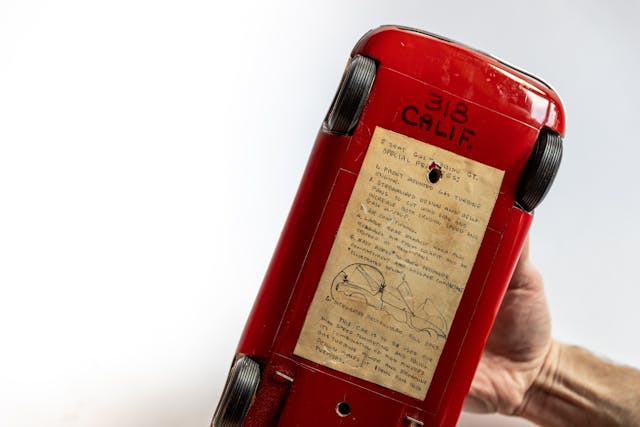
In order to ensure a geographic and age distribution of winners, the Guild divided the nation into regions and its entries into junior (11–14) and senior (15–19) divisions. In order to be eligible for the national scholarship competition, you had to do well in the region, then box up and mail your model to Detroit—instructions were included in the newsletters on the best way to safely crate it for shipping—to be judged for the national competition on a points system that split the criteria between the quality of the design and the workmanship of the execution.
Special telegrams notified the 40 finalists for the scholarships—20 each in the junior and senior divisions—who were invited on an all-expenses-paid trip to the Fisher Body Craftsman’s Guild National Convention and Banquet. Parents were not allowed; the Guild members traveled from the far-flung corners of America on their own, with GM personnel detailed as escorts to help the kids transit at layover airports and train stations.
Simone vividly remembers his trip in 1961 from his home in Rhode Island. “I have to admit, I was in shock. I didn’t know nothin’, I was 15 and had never been out of Providence before.” He flew in a small plane to the old Idlewild Airport in New York, where a GM representative met the wide-eyed teen and walked him to his next flight. “The Boeing 707 had just come out, and they put me on a brand-new 707 jetliner—and here’s the kicker: We went first class.”
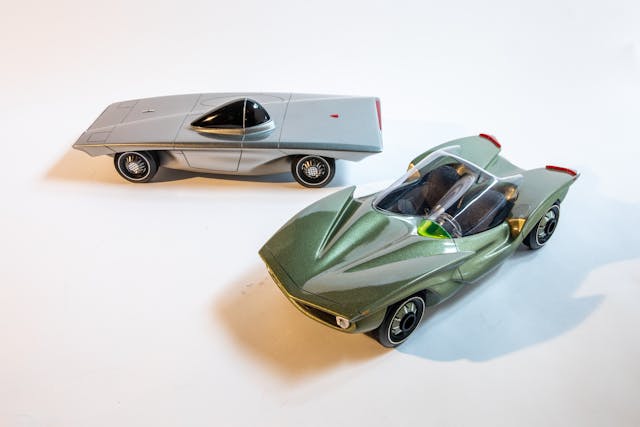
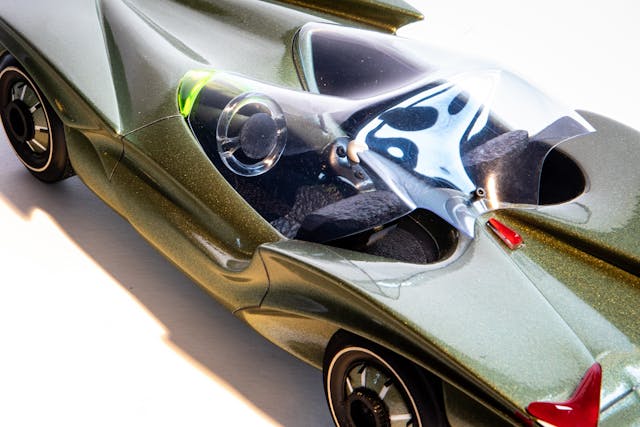
Following a dinner of filet mignon, they flew to Detroit, where Simone was directed to a Cadillac Fleetwood limousine that whisked him and some other arriving Guild members to the downtown Book-Cadillac Hotel. There, the group was intercepted by a team of tailors that measured the kids with military efficiency. “Overnight,” remembered Simone, “they made me a whole suit with the Fisher Body Craftsman’s Guild logo on the jacket.”
The next day, after a sightseeing trip around Detroit, the finalists were ushered to the banquet hall where Fisher Body gathered around 800 managers from GM’s vast design, engineering, and manufacturing organizations as well as top scientists, newspaper writers, politicians, and celebrities. Guild members in their matching new jackets sat in rows on a long, terraced dais while the event was presided over by emcees who were luminaries of the day, including Father Knows Best actor Robert Young, broadcaster Lowell Thomas, and TV newsman Walter Cronkite.
Seated in the crowd were typically some of the towering figures in GM history, including Alfred P. Sloan and Charles F. “Boss” Kettering. Judges included Harley Earl, his successor Bill Mitchell, Chrysler design director and tailfin czar Virgil M. Exner (a Guild winner himself), and rising young design star Chuck Jordan. The evening culminated in the scholarship awards for the top three models in the junior and senior divisions plus five honorable mentions each, usually announced by the president of GM or his second-in-command to uproarious cheers from the audience.

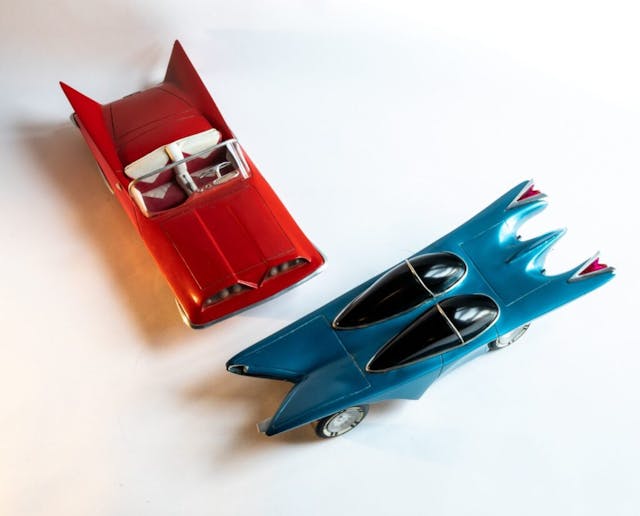
For the next few days (as GM photographers quietly snapped detail photos of every model to be studied later for possible inspiration), the young Guild members were squired around the region, visiting GM’s gleaming Technical Center, touring its design studios, and seeing and touching the dream concepts they had only read about in magazines. Dinners were lavish affairs at local country clubs. Pellman remembers going to a furniture factory and taking a Detroit River cruise to the Boblo Island Amusement Park. There were informational presentations by officials from the FBI, visits to Fisher Body assembly plants, and trips to the nearby Selfridge Air Force Base to sit in jet fighters and meet their pilots.
“If you won, you were on a roller coaster ride for a week,” said Davids. Winners were interviewed in newspapers and on the radio, and even appeared on TV talk shows. Their high schools received their own towering trophy, and their models went on a national victory lap of dealerships, corporate offices, and exhibitions, at times aboard GM Futurliners that once roamed the country touting the corporation’s industrial exploits. Many builders didn’t see them again for two years.

“It opened up a lot of doors for me,” said Davids, who went on to live a number of lifetimes, including fabricating body panels for Craig Breedlove’s 526-mph Spirit of America land-speed car, earning several college degrees, doing a stint running GM’s experimental design studio, operating a casino, launching a company in the late 1970s to design and manufacture some of the first hand-held electronic games sold in toy stores, and starting a winery specializing in pinot noir.
Other Guild alumni, like Jordan, Exner, Richard Arbib, who worked for years at GM as Harley Earl’s right-hand man, and Pontiac, GMC, and Hummer design chief Terry Henline, forged long and successful careers in the auto industry, often after Guild-funded degrees from the famous ArtCenter College of Design in Los Angeles. Still others went to work in aerospace, academia, product and packaging design, and varied pursuits in engineering and manufacturing. William A. Fisher’s plan to seed the American economy with capable, tenacious, hands-on thinkers had worked brilliantly.
However, even in 1963, the end of the Guild could be predicted. “It was a happy moment,” said Davids, “but the Beatles came out the year after I won, everything was changing, and kids were getting kind of crazy. There just weren’t enough who were disciplined.” Entries dropped precipitously through the 1960s, records Jacobus, from more than 4000 in ’63 to fewer than 2000 in 1967. Model quality also declined. Besides the social changes, which included more distractions and time demands on young people, GM was eyeing the multimillion-dollar costs of the program as new safety and emissions regulations threatened to squeeze Detroit in a financial vise.
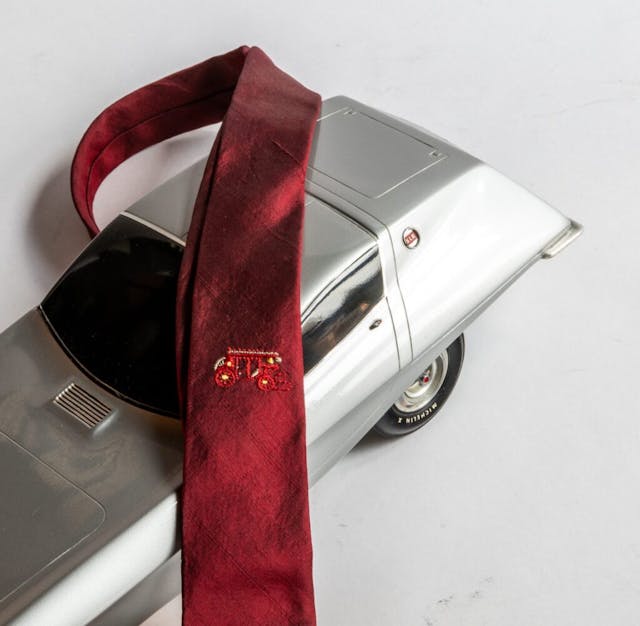
And so, along with the fading of the program’s originator and patron, William A. Fisher, who died in 1969, the Fisher Body Craftsman’s Guild expired as well. A reunion of Guild members at the ArtCenter College in Pasadena in 2016 led to an effort by former members to conserve as many models as possible, and there are now permanent displays in several museums around the country (see below).
As time thins the ranks of the Guild’s surviving members, it’s worth remembering an era when so many teenagers dreamed of a career designing cars. And when the auto industry was clever enough to devise a productive scheme to harness and focus that youthful energy, simply because it recognized that its future, as well as the nation’s, depended on it.
***
On Display: Where to See a Fisher Body Craftsman’s Guild Model
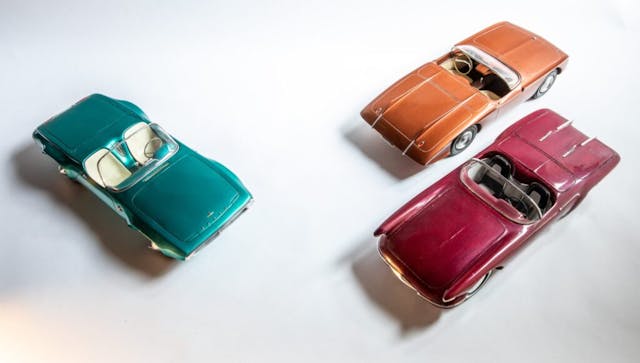
Petersen Automotive Museum
30 models, 1 coach
Los Angeles, CA | petersen.org
***
Gilmore Car Museum
50 models, 1 coach
Hickory Corners, MI | gilmorecarmuseum.org
***
AACA Library & Research Center
26 models, 1 coach
Hershey, PA | aaca.org/library
***
Piston Palace
20-plus models, 1 coach
Warwick, RI | pistonpalace.com
***
National Route 66 Museum
8 models, 1 coach
Elk City, OK | elkcity.com
***
National Automotive & Truck Museum
5 models, 1 coach
Auburn, IN | natmus.org
***
National Museum of Transportation (Coming Soon)
10-plus models, 2 coaches
St. Louis, MO | tnmot.org
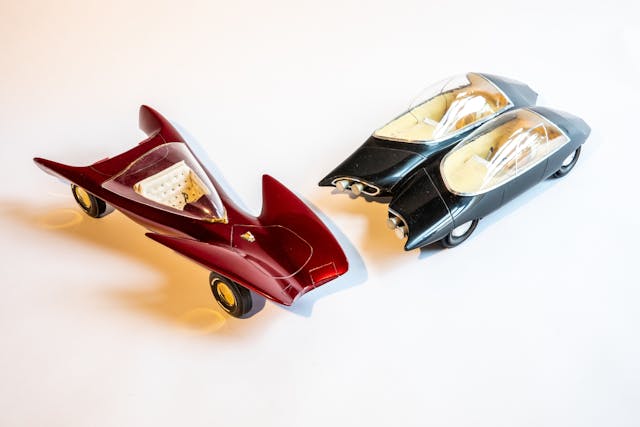
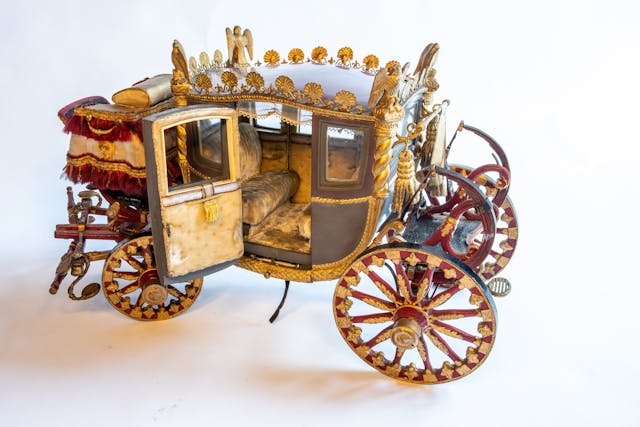



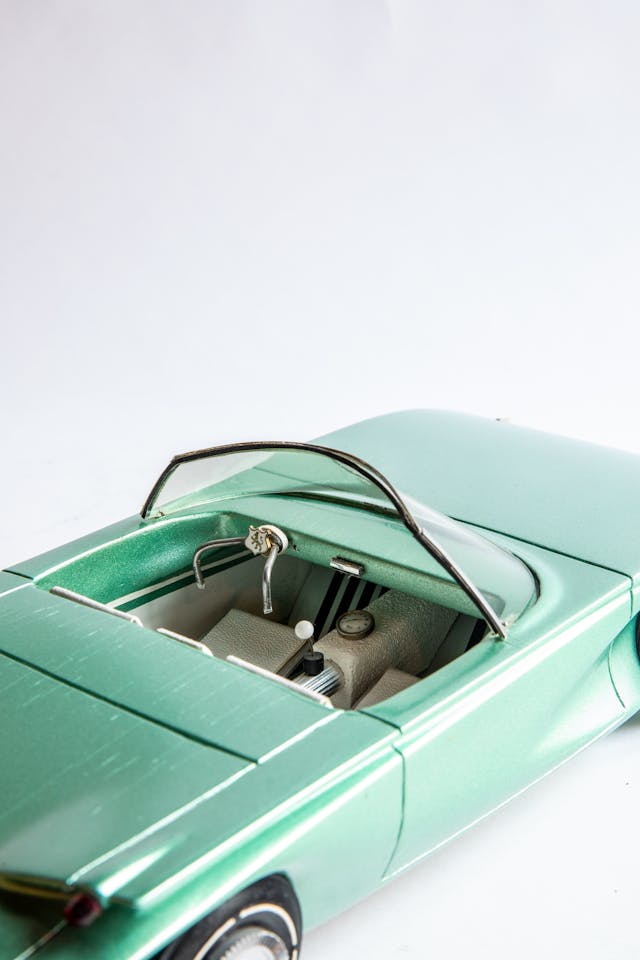
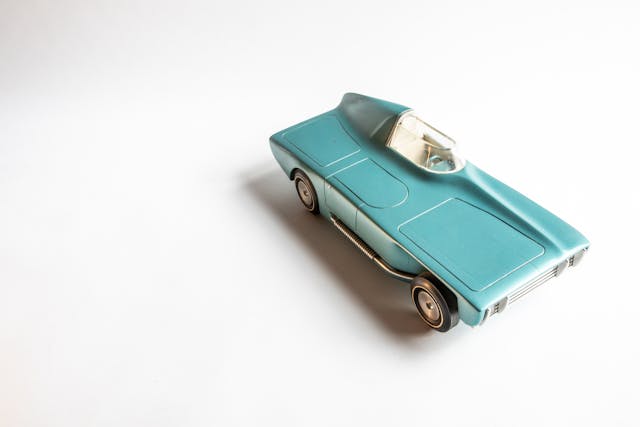
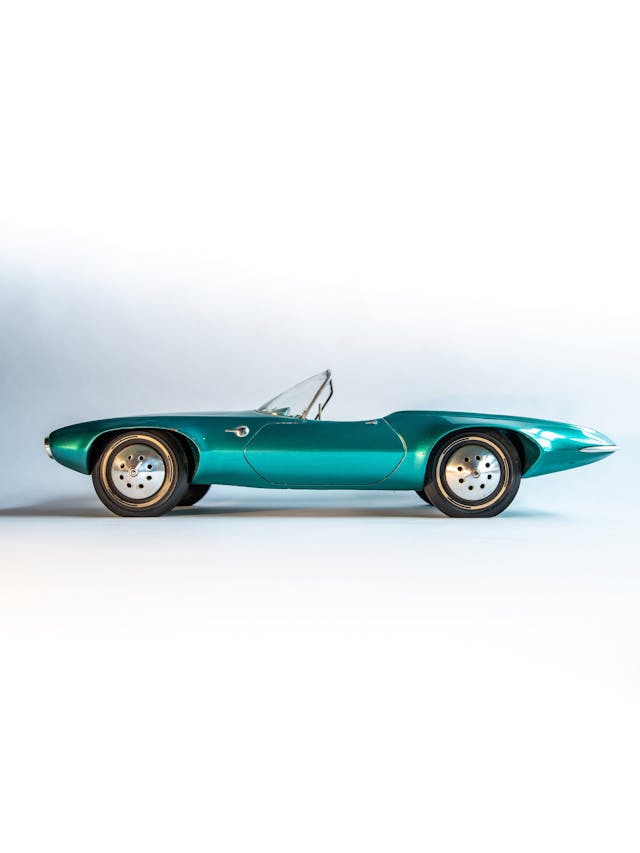
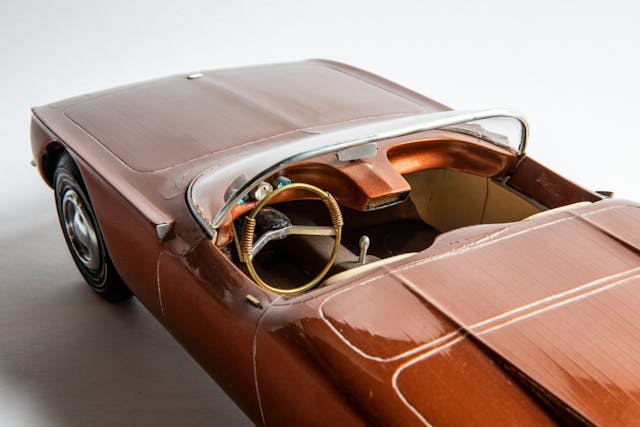
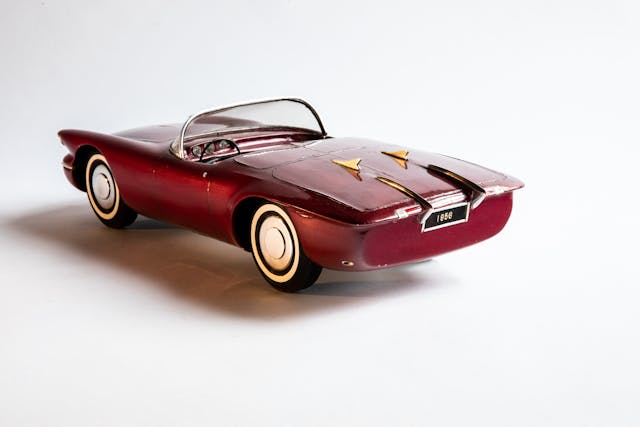


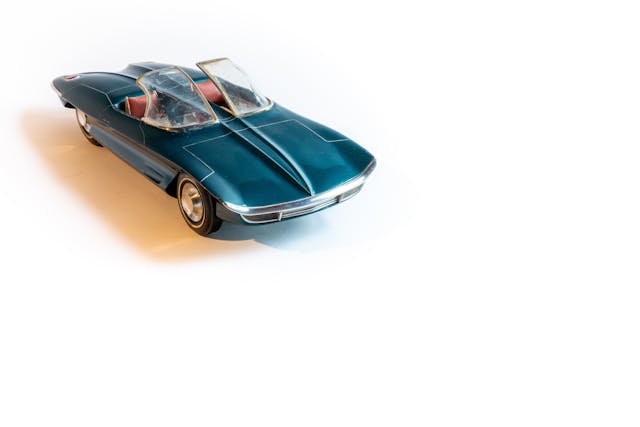
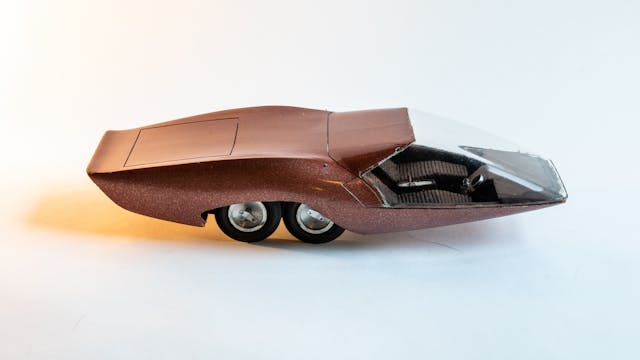
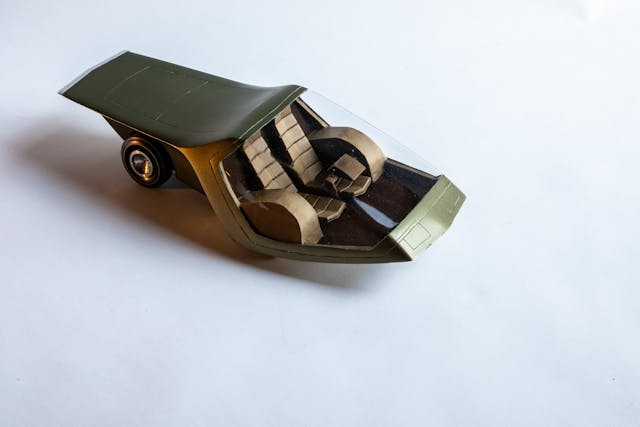

Check out the Hagerty Media homepage so you don’t miss a single story, or better yet, bookmark it. To get our best stories delivered right to your inbox, subscribe to our newsletters.
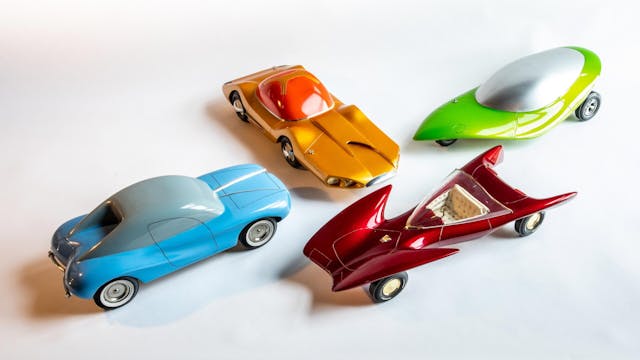


Very interesting article! About 20 years ago I met an older gentleman and we chatted. The topic eventually moved to model cars. I said I did model cars then he showed me the one he had done. I did the plastic models from the likes of AMT, Revell and Monogram. His was from the Fisher Body model contest. That was real model making! He introduced me into the history of this model making and it was quite fascinating!
There were probably 50 of these models at the Pasadena Art Center of Design car show last year. Very impressive. After seeing that generation of models, the tour showed us what the new generation is working on. Also very impressive in their own right – and they are still working in clay – alongside 3D printing and CAD.
Way back in Jr high school years 62&63 I built and submitted two cars to the Fisher Body Guild contest. Unfortunately my compact sports car designs were not chosen for any honors but I still have them and enjoy seeing them in my display case.
I wrote the first article on the Fishers Body Craftsmans Guild in SPECIAL INTEREST AUTOS, (#81, Feb. 1981), before AUTOMOBILE QUARTERLY or some of the follow-ons. I think that my history has been mined for facts (and quotes) since then! Mike Lamm, SIA founder, knew a lot of brass at GM, including Chuck Jordan, who won in 1948 (when I was three) and he put out a memo for all the previous entrants still at GM Design Staff to bring their models to work, and had GM Photographic shoot them for the magazine! Also, I got about a dozen interviews, including one from Tony Ingolia who placed in one of the earliest automotive-model competitions in 1937, as I recall. Previous to that, the contest has been based upon a reproduction (Fisher supplied complete plans!) of the Napoleonic coach that was Fisher’s trademark — seen on the step-plates of innumerable GM cars over the years. I still have a pristine copy of those plans, btw.
I have my literature from 1962, when as an 11th grader from a microscopic high school (knew the value of art classes: they never offered any at all!) in a tiny remote hamlet in N CA, I had ambitions of winning. After carefully reading all their handouts and manual, I knew (I was right!) that I had no chance of even getting considered, so went back to hacking and puttying AMT 1/25 scale kits — most of which I still have, also! It was this, however, that led me to suggest the topic to the editor in the late ‘seventies, and it was very well received. I still have the wonderful letter from Art Center’s Strother MacMinn complementing me on the subject and treatment — good feeling, as I never got to attend there, but got my art at Cal State.
Besides GM Europe/Opel’s continuation of the competition for some years, AQ tried to revive it for a few annuals without the 3-D model component; however, when one of their top winners turned out to have plagiarized his entry rendering from a magazine, it faded away. At least AQ admitted it — probably would be covered up or ‘muted’ nowadays! Wick, age 78, car guy since before you were born…?
It’s a cool story. It would be cool if they still used some variant of this to get some more design into cars. The brands are mostly making the same box in small medium and large versions.
This was another great program from the time General Motors led in almost everything. Starting with General Motors Institute in 1919, then the Craftsman’s Guild, then the Parade of Progress (as well as plenty of apprenticeship programs) GM Management was willing to make an extra effort to find the talent needed to be the industry leader. As a teenager, I joined the Guild after learning about the program at the New York World’s Fair, although I was never able to create something worth entering. But I did get accepted to, and graduated from, GMI in the 70s. At graduation it was clear that you would go nowhere in the company unless you earned an MBA. The forward thinking management was all gone by then in favor of business school pedigrees that would focus on maximizing investor return instead of innovative product.
This is all sorts of impressive. Too bad something like this doesn’t exist today. There is a lot of talent out there that is being wasted.
These would impress me enough if they were mere sketches but to see them brought to solid reality, by kids, is beyond astonishing!
Worth noting that the late Chuck Jordan’s son Mark is head of design at Mazda’s US office and played a major role in the design of the original MX-5 sports car.
Great article. Brings back memories, as I was a member of the Guild in Massachusetts 1961-63. Built (3) models, but only the last one was a quasi-winner at either 2nd or 3rd place. It sits on my shelf in my Den along with other past and present sports car models. – My original desire was to be an automotive designer, but my career took another direction and became involved in aerospace, in rocket and jet engine development and support. Automobiles and their designs are still at the top of my personal interests, but aerospace is a close second. -Again, great article.
Great article with many details. I have been fortunate to attend a few of the Guild reunions and meet many of the later winners. Some later went into technical design for various companies but others went into engineering as they had to explain the feasibility of their designs. It was all part of the judging. I’m also trying to restore one of the original coaches – thin brass embellishments on the wheels and castings have me stumped as to how it was accomplished by teens in the ’30s – let alone by a 70-year-old today. Maybe a jeweler or clockmaker offered help.
In 1960 I drew many vehicle & OTR truck tractor designs. I did not
have resources to build models, subsequently never entered. I honestly believe some of my concepts are on the roads today. I remain a car nut having restored my 1st VW bug ’72 Super Beetle and use my ’93 Dodge Cummins Turbo (driven 22 years daily driver)
now a drum set hauling rig.
What a wonderful article! Thanks.
The detail on models shown are incredibly well done. I bet some went on to have great careers in the field.
Wow, did this article bring back memories I remember when I was in sixth or seventh grade in 67 or 66 I built a model for craftsman’s guild. The local high school opened up at Shop so me, and about a dozen other kids were supervised with all the best woodworking equipment to build our models. They were built from a solid piece of basswood carved sanded and painted. Some gentlemen supervised us all, and gave us guidance and encouragement as we undertook this task. I have no idea what happened to my model, but I would give a pretty penny to find it today. The skills that were developed and the resourcefulness to build a model to do the carving, mount the wheels the hubcaps the lights was quite an undertaking for a junior high kid, but I did it along with a bunch of other kids and feel quite proud of that accomplishment. I don’t believe today anything like this could be attempted or if it was, it would be on a computer screen and 3 d printed. What a gift to grow up in the time where the craftsman guild was a program. I remember they took a photo of me, holding my car in a craftsman‘s guild baseball jacket. I wish I could find that also.